Film infrared heater: device, principle of operation, an overview of the types of IR systems
Heating systems for non-residential and residential premises are presented in large quantities on the market. And among all this diversity, the infrared film heater stands out for its high efficiency, long service life and increased operational safety.
The article we presented describes in detail the principle of operation of equipment used to form radiant heating. The advantages with disadvantages are listed, technical specifications are given. We will introduce you to the application options and device construction methods of popular film systems.
The content of the article:
Electrical appliances for infrared heating
Abbreviation PLEN means “radiant film heater” or simply “film heater”. It is permissible to use a heating IR film as an additional and main heat source.
In fact, this is a film with internal heating elements emitting infrared waves as a result of the passage of electric current through them.
The advantages of the infrared principle
Heating of air masses in a room from a particular source can be carried out due to:
- thermal conductivity;
- convection;
- thermal radiation.
The first two principles of heat transfer are used in water and oil coolersas well as fans with heating coils.
In them, first with a coolant or TENA a certain working surface is heated, from which then room air is heated in its immediate vicinity. Then, using natural or forced convection, air is exchanged throughout the room.

Thermal radiation refers to the transfer of heat from a source using electromagnetic radiation from the infrared spectrum. Air directly from infrared rays cannot heat up.
They can only heat surfaces made of solid materials. That is, first as a result of work heating systems the furniture and furnish in the room are heated, and then they give off heat to the air.

Infrared heat is electromagnetic waves in the range of 0.74–2000 microns. If you look at the Sun, then about 40% of its radiation on the Earth falls on visible light, and about 10% and 50%, respectively, on UV and IR rays.
IR type film electric heaters generate thermal energyhaving a wavelength in the region of 9.2 μm. For humans, such rays are completely safe, natural, as they most resemble "sunlight." Indeed, in itself, the human body emits infrared heat with a wavelength of 9.6 microns.
The device of the film heating system
IR film electric heaters include three main elements:
- heating;
- transmitting;
- radiate.
The first converts electrical energy into thermal energy. The second distributes the generated heat throughout the area. PLENAand the third emits infrared rays.
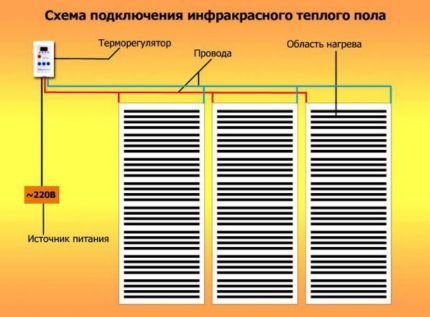
Heating element in PLENE made from a high resistance conductor. Usually this is a thin strip of nichrome (spirals are made from it TENah) or carbon. At the same time, almost all manufacturers of film IR heaters have now switched to the second option. Carbon is more economical, cheaper and more efficient.
The transmitting element is a layer of aluminum foil, which is characterized by high thermal conductivity. It is located on one or two sides of the IR film. Also, a number of manufacturers do not use aluminum at all, relying only on radiating material.
The upper layer of the considered film heater on both sides is made of PAT (polyethylene terephthalate). Film of this thermoplastics It has a high IR coefficient, quietly withstands temperatures up to +2000C and is an excellent dielectric.
The film cleans the internal heating elements from condensation and moisture, forms a unified heating system from disparate components, and also reduces the risk of electric shock to a person to almost zero.
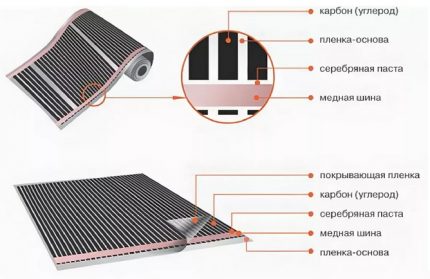
Calculation and installation of a film IR heater is made taking into account that the film will not work for heating constantly, but in short intervals from a few seconds to several minutes.
That is, such an infrared heater quickly raises the temperature of the surfaces in the room to the required values, and then turns off the thermostat. And then again powered from the mains only occasionally as the room air cools.
Scope of Infrared PLENA
Film radiant heaters are most often used as an appendage to water heating. In the southern regions, they can serve as the main heating system. It is only necessary to correctly calculate the required infrared film area for the required situation.
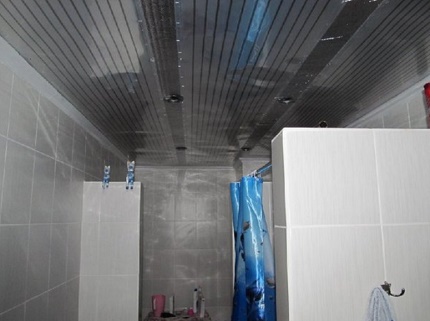
Infrared film heaters can be installed in:
- residential country houses;
- city apartments;
- baths and saunas;
- production and storage facilities;
- courtyards for keeping animals;
- garages with and without heating;
- greenhouses, etc.
There are no fundamental restrictions on the use of the considered low-temperature electric heaters. The only limitation for the device infrared heating - the room should be with dimensions in height of up to 3 meters. If the ceilings are higher, then you will need to install high-temperature and more expensive models of infrared heaters.
Characteristics and types of IR films
Infrared electric heaters are divided into two types - low-temperature and high-temperature. The first ones can only warm up to +50 0C, and the second even up to 200 0C. In everyday life, only variants of the first type are used in the form PLEN or lamp or panel devices, designed to operate on an electrical network of 220 V.
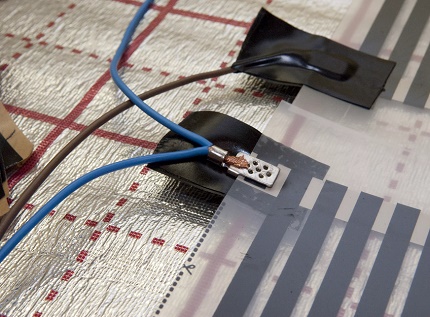
Technical characteristics of low-temperature film IR heaters have the following:
- The rated voltage is 220 volts.
- Maximum film heating temperature - 40–550C depending on the model and manufacturer.
- Degree of protection on IP - from "22" to "67".
- The weight of the heating sheet is about 500 grams / m2.
- Specific power - 150-300 W / m2.
- Current load - 0.68–1.4 A / m2.
- Length - 0.25–7 m.
- Width - 0.5–1 m.
Manufacturers guarantee infrared film 10-15 years. However, in fact, such heating systems last up to half a century.
According to the installation method, film infrared heaters are divided into:
- wall mounted - “heating pictures” (for additional local heating);
- ceiling - behind suspended and suspended ceilings;
- outdoor - "warm floor".
The floor-standing counterpart in terms of efficiency is slightly inferior to the ceiling. Film underfloor heating Do not lay under cabinets, beds, or sofas. And the furniture of the place in the living room always takes up a lot of space. "Pictures" and just films behind the decor on the wall is the worst way to use IR film heaters.

Infrared heating films are produced in the form of:
- models of given sizes (e.g. "ZEBRA" or “NIRVANA”);
- canvases for individual cutting according to design dimensions, produce them with a width of 50 to 100 cm.
The first option cannot be cut at the installation site. Such systems are available in finished form, you just need to connect the wires with terminals. They must be especially carefully selected from the size range available to the manufacturer so that the installation does not cause problems later.
The second version of the films is sold in rolls up to 7 meters long. This option infrared underfloor heating can be cut to the required dimensions directly in the room with ordinary scissors.
Advantages and disadvantages of film heaters
The advantages of heating IR films are as follows:
- High safety and reliability.
- Minimum installation time for an electric heating system.
- The fastest and most comfortable for a person warming up the room.
- An aesthetic view of the heating system, which is completely covered by decor.
- Full automation of the heater, as a result, lack of need for maintenance.
- High efficiency.
- Zero risk of water (coolant) leakage from batteries.
- Lack of problems with drying and burning out of oxygen in room air.
- Absolute silent operation.
- No convection - no dust settling everywhere.
- The ability to install in each room in the house its own microclimate in accordance with the specified parameters.
- The absence of sudden temperature changes in height (the difference between the floor and the ceiling will be within 2-3 degrees).
Conductors and heating elements in the infrared heater are reliably sealed in PAT film in the factory. Plus, there are no moving parts in such a heating system at all. Wear out, break and to corrode nothing.
In a house with an area of 100 squares, an IR film system, together with wiring and protection in an electrical panel, is mounted in 2-3 days. The main thing is that the network is designed for the required loads.
Turn on / off the electric heater thermostat, which monitors the temperature in the room using the built-in sensors and itself supplies power to the heating elements. There are also programmable thermostats that allow you to set different modes for different rooms and time of day.
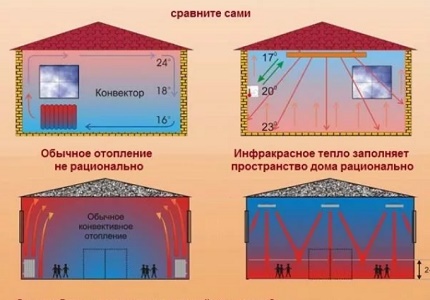
Of the minuses of film infrared electric heaters it is worth mentioning:
- Large electricity bills.
- The need for sufficient power at the input of the mains into the house.
With the same area of the cottage or apartment, the cost of electricity will be 1.5–2 times higher than the cost of gas heating from the trunk system. But a gas boiler, its connection to the mains or gas tank and the installation of batteries with pipes is also significant money.
Installation of a radiant heating system will cost several times cheaper than this option. And at solid fuel boilers he wins even more in terms of fuel consumption and installation cost.
Features of the installation of film infrared heating
Flexible film heaters can be mounted on their own without any difficulty. The main thing during transportation and cutting is not to bend the film at an angle of more than 60 degrees. Its incision is made in places indicated by the manufacturer on the canvas.
As a heater, it is best to put under the film isolon or penofol with reflective infrared rays foil layer. And the temperature regulator should be installed away from direct sunlight, batteries and drafts.

To achieve maximum effect, the area of the film heater should reach 60–70% of the quadrature of the heated room. At the same time, under the furniture on the floor and above tall cabinets under the ceiling, it is impossible to put IR film. The sense for people from such heating will be zero, but the points of local overheating in the room will appear.
Also, the bands of the infrared flexible electric heater must be moved away from the walls by 15–20 cm. To correctly calculate and lay out the film, you must first draw up a plan of the room with all the required indents and places for arranging the furniture.
Any finishing material is a screen for infrared radiation. The only question is the degree of its transparency, the weakening of infrared rays and the heating of this finish or cladding. Some objects facing options allow radiant heat, while others less.
Option # 1 - on the floor
Laying the infrared infrared heater in the floor version is made on a flat, rough base of concrete, wood boards or drywall. You can’t put it in a concrete screed or layer of tile adhesive, polymer film not designed for alkaline effects from the cement used in this process.
As a topcoat, it is permissible to lay on top:
- laminate (without cork backing);
- thin carpet on the flooring made of chipboard or plywood;
- linoleum without a heat-insulating sublayer.
Parquet on top of IR film is not recommended.Wood parquet dies from overheating will crack and creak.

By SanPiNam flooring in living rooms may only be heated to +26 0C. However, in severe frost outside the window, the infrared floor heating system will have to be turned on at full power to achieve comfortable indoor air temperatures.
And in this case, walking on it with bare feet will uncomfortable. This is the main disadvantage of the floor version of infrared film heating.
Option # 2 - on the ceiling
Ceiling infrared film heaters are allowed to cover:
- lining, MDF and GKL with a thickness of up to 12 mm;
- stretch ceilings (PVC or fabric);
- suspension systems of type "Armstrong" or "Grilyato».
You can also use plastic panels, but only on condition that their manufacturer allows the heating of their decor to +500WITH.
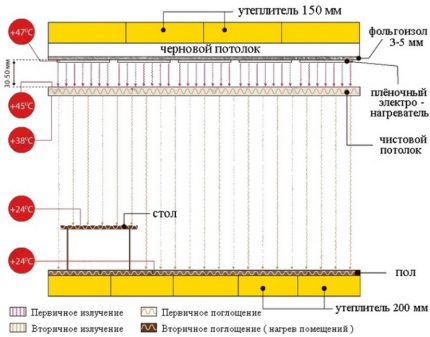
If the IR film heater is mounted together with a suspended ceiling, then the heating film should be laid directly on the frame of the system. It is impossible to fix it on the ceiling, as there will be too much air gap between PLEN and fine finish.
It is impossible to mount any metal, mirror and glass finishing structures on top of an infrared film. Also avoid using glass magnesium panels.
Conclusions and useful video on the topic
Clip # 1. On the advantages and installation of the ceiling PLENA:
Clip # 2. Types of heating infrared films:
Clip # 3. Pros and cons of infrared heating:
Infrared radiant heat in your home is an effective and safe way to heat your home. Installation of electric IR films pays off within 2-3 years due to savings on solid fuel for boilers and the cost of boiler equipment.
Even with gas-fired heating, the heaters in question ultimately win. It is only necessary to correctly calculate them for a particular room and has sufficient specifications for the power of the power grid.
Want to talk about how you chose or installed a radiant film heating system with your own hands? Have a desire to share the technical nuances and technological subtleties that are useful to site visitors? Please write comments in the block form below, ask questions, publish photos on the topic of the article.

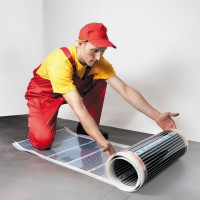 Infrared carbon warm floor: operating principle and laying rules
Infrared carbon warm floor: operating principle and laying rules 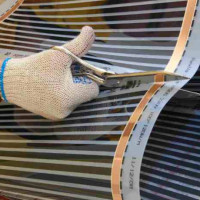 How to make a film underfloor heating under linoleum: instructions for laying an infrared heating system
How to make a film underfloor heating under linoleum: instructions for laying an infrared heating system 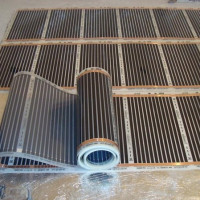 How to make an infrared warm floor with your own hands: installation and connection of a film floor
How to make an infrared warm floor with your own hands: installation and connection of a film floor 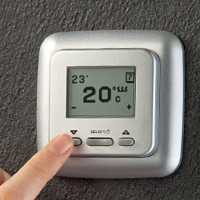 Thermostat for underfloor heating: principle of operation + analysis of types + installation tips
Thermostat for underfloor heating: principle of operation + analysis of types + installation tips 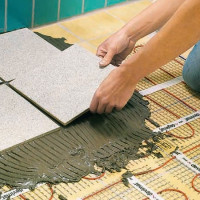 How to make an electric heated floor for tiles: film and cable option
How to make an electric heated floor for tiles: film and cable option 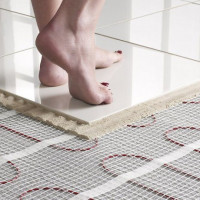 Which underfloor heating is better for tiles: the pros and cons of various solutions + an overview of the best manufacturers
Which underfloor heating is better for tiles: the pros and cons of various solutions + an overview of the best manufacturers  How much does it cost to connect gas to a private house: the price of organizing gas supply
How much does it cost to connect gas to a private house: the price of organizing gas supply  The best washing machines with dryer: model rating and customer tips
The best washing machines with dryer: model rating and customer tips  What is the color temperature of light and the nuances of choosing the temperature of the lamps to suit your needs
What is the color temperature of light and the nuances of choosing the temperature of the lamps to suit your needs  Replacement of a geyser in an apartment: replacement paperwork + basic norms and requirements
Replacement of a geyser in an apartment: replacement paperwork + basic norms and requirements